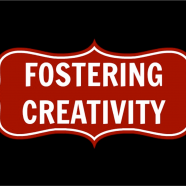
Creativity is considered by many business leaders to be the most important skill set to meet the growth challenges of the future, whether it involves branding, advertising or worker productivity. The global decline of birthrates will decrease the number of younger workers who account for the most imaginative innovations, but there are also opportunities to counteract these challenges.
The Profound Consequences Of Lower Fertility
The Economist recently focused on this problem of fertility and aging economies. Basically there are three drivers of growth: labor, capital and efficiency (e.g. productivity). The supply of labor is at risk due to declining fertility in America and other rich countries, in particular. The fertility rate measures the number of children a typical woman will have over her lifetime. The “replacement rate”, which keeps a population stable, is 2.1, so anything lower will lead to a declining population. Today the 15 biggest economies, including America, China and India, have 752 million people aged 21-30, but with birth rates below 2.1. By 2050 this supply of entrants to the workforce will be reduced by 20%, to 619 million.
The ageing of these populations will mean higher spending on public pensions and health care, plus fewer people of working age to pay the taxes required. Other negative consequences include later retirements, higher taxes, and lower real returns for savers. In short, shrinking workforces, especially younger people, will have a huge impact on economic growth, unless this trend is counter balanced with improved creativity and innovations that youthful dynamism has provided in the past.
How Creativity Can Help
The other key determinant of economic growth is efficiency or productivity. Between 1947 and 1973, productivity growth accounted for about 60% of the rise in output per worker in America, Britain, France, Italy, Japan and West Germany. Even recently, America grew faster after the 2007-2009 financial crisis due mainly to gains in productivity.
Innovations for these productivity gains come primarily from younger people. Economists and psychologists have found that these young inventors have more “fluid intelligence”, meaning the ability to solve new problems and engage with new ideas, including more patents. Older people have more “crystallized intelligence” which consists of knowledge built up over time. This fluid intelligence leads to novel, disruptive innovations which can change a discipline or scientific field. Importantly this creativity generates innovations that raise productivity. But with the shrinking number of innovative young thinkers and hence a reduction of new ideas, the challenge is how to enhance creativity to counteract this trend.
Help From Education And AI
Einstein said “Imagination is more important than knowledge”. The most obvious area for expanding one’s imagination and building creativity skills is through education. In America, this will require an investment in qualified teachers and new protocols. Educational processes and traditional values must be re-examined, ideally to provide less structure and more independent thinking for creating novel ideas at an earlier age (starting at pre-kindergarten).
It is a myth that people are born with creativity. Instead educators must create circumstances in which youngsters become creative. It is critical to stretch the boundaries for interpretation and let imagination play out by itself. There must be less memorization and control, and instead let things just happen. Context and freedom of expression are essential (these are all “woke” attributes that extreme politicians are fighting against, an effort that could smother creativity). In short, students should be encouraged to take risks and not be afraid to make mistakes.
The other opportunity for creating truly disruptive new ideas that can maximize the worker output is the use of artificial intelligence (AI). The potential for AI finding new solutions for problems is enormous, and the capabilities are only now being discovered. However to ensure that AI generates novel ideas that are truly useful, emotionally sensitive and practical requires a partnership between this technology and a creative person. There have been many examples of how AI has generated insights that are based on disinformation or fictitious experiences, so verification by humans is critical. The AI opportunity is essentially about augmentation of creativity, and how it can help human beings achieve better efficiencies.


